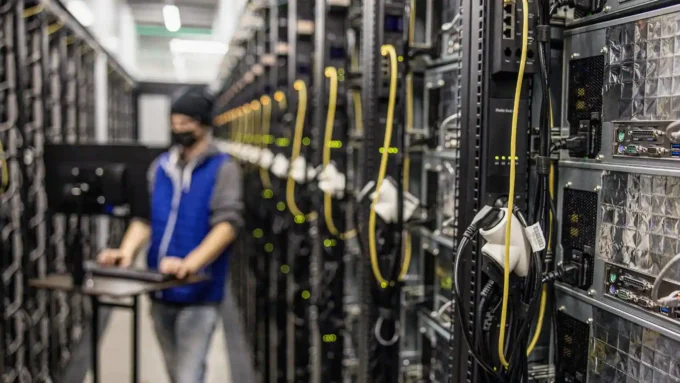The influence of cryptocurrencies such as bitcoin on the environment is a hot topic of discussion. Bitcoin is a very energy-intensive currency. This energy use is increasing, and it now consumes as much energy as entire countries like Finland, Malaysia, and Sweden do each year.
While bitcoin is not the only industry that consumes as much energy as entire countries, for example, concrete requires more energy than India, both sectors produce pollution, including carbon emissions.
Cryptocurrency mining frequently uses electricity generated from fossil fuels. As the price of bitcoin climbs, so does the amount of electricity consumed. Miners will be even more motivated to mine coins as the price rises, attracting more people to join the bitcoin network. Read on to find out about the actual impact of Bitcoin on the environment.
What is Bitcoin?

Source: unsplash.com
A cryptocurrency is an electronic medium of trade with no physical equivalent, such as a coin or dollar bill, and no money has been staked to begin it.
Cryptocurrencies are decentralized, which means that they are not regulated by a central authority such as a bank or government. The benefit is that there are no transaction fees, that anyone may use it, and that it simplifies transactions such as transmitting money across national borders. While transactions are recorded, the individuals who make them remain anonymous. However, because of the anonymity and lack of centralized control, tax evaders, criminals, and terrorists may use cryptocurrencies for malicious ends.
Cryptocurrencies needed to discover a mechanism to ensure that transactions were secure and that their tokens couldn’t be spent more than once because they didn’t have physical money or central authority. When a mystery individual (or persons) known only as Satoshi Nakamoto (whose true identity is unknown) discovered a solution to these problems in 2008, Bitcoin was founded. Nakamoto’s response was a digital ledger system based on mathematics and cryptography featuring blockchain transactions.
The amount of bitcoins that can be created is limited to 21 million, according to Nakamoto. While there has been debate concerning the mathematical theories that led to the selection of that number, no one knows for sure. A total of 18.8 million bitcoins were in circulation as of this month, with the rest projected to be released by 2140. Click here to start trading cryptocurrency.
Bitcoin’s Impact On Environment

Source: unsplash.com
We must first consider how Bitcoin is mined in order to comprehend its environmental impact. The analysis and computation of complex mathematical equations are required for the creation of a new coin. Computers are used for this. The rate at which a coin may be mined is proportional to how fast the computer is. A single block of these currencies is mined using software that takes roughly 10 minutes on average.
This, of course, necessitates the use of electricity, and the mining process accounts for a large portion of the total energy usage. According to a recent analysis, Bitcoin mining in China will consume 296.59 TWh of energy annually by 2024.
While power can be generated utilizing cleaner techniques such as air or water, the truth remains that fossil fuels still provide the majority of our electricity. Mining, which is required to create Bitcoin, is increasing in popularity as well. According to numerous projections, Bitcoin alone might emit enough carbon dioxide to send global warming past 2 degrees Celsius in less than three decades.
The major issue is that the public ledger that tracks and logs Bitcoin transactions is decentralized. This means it is not under the control of a single authority and operates through a global network of computers. These are usually custom-built computers that have been programmed to answer the mathematical problems they are given.
On the other hand, important figures such as Jack Dorsey and Catherine Wood have issued letters claiming that bitcoin will actually drive sustainable energy developments. They claim that Bitcoin miners are one-of-a-kind and location-independent, requiring only an internet connection to begin mining.
As the coins become more affordable to obtain, these incentives lead them to seek out cheaper kinds of renewable energy to generate them. For example, the Chinese region of Sichuan is known for attracting a large number of miners due to its cheap electricity and extensive hydropower resources.
How does Cryptocurrency Eat Up Energy?

Source: livemint.com
Mining is a complicated process that is used to create cryptocurrency. In broad strokes, specialized mining machines compete to solve complex arithmetic equations that result in the creation of modest sums of new cash. These computers, which are placed all over the world, often work 24/7 and need a lot of electricity to keep running and cool.
Bitcoin mining uses roughly 91 terawatt-hours of electricity every year, which is more than Finland, which has a population of 5.5 million people, operates in a year. Validating a single Bitcoin transaction takes over 2,004 kilowatt-hours of electricity as of December, which is enough to power the average American family for nearly 69 days.
Due to the heat, noise, and electricity necessary to operate cryptocurrency mining operations, they are usually housed in commercial rather than residential premises. These large-scale mining operations may handle hundreds, if not thousands, of computers at once, and the vast majority of their energy comes from non-renewable sources.
Conclusion
Large-scale bitcoin miners are frequently found in areas with plentiful, reliable, and inexpensive energy. However, it is unnecessary to use a lot of energy to process bitcoin transactions and create new currencies.
Proof-of-stake (PoS) is a non-computing-intensive way of validating bitcoin transactions and minting new coins. Instead, the ability to validate transactions and run the crypto network is awarded based on the amount of cryptocurrency a validator has “staked” or pledged not to trade or sell.
Other validation techniques are being developed, including evidence of history, proof of elapsed time, proof of burn, and proof of capacity. None of these approaches requires a lot of processing power, which gives them an edge over the energy-intensive proof of work protocol.







